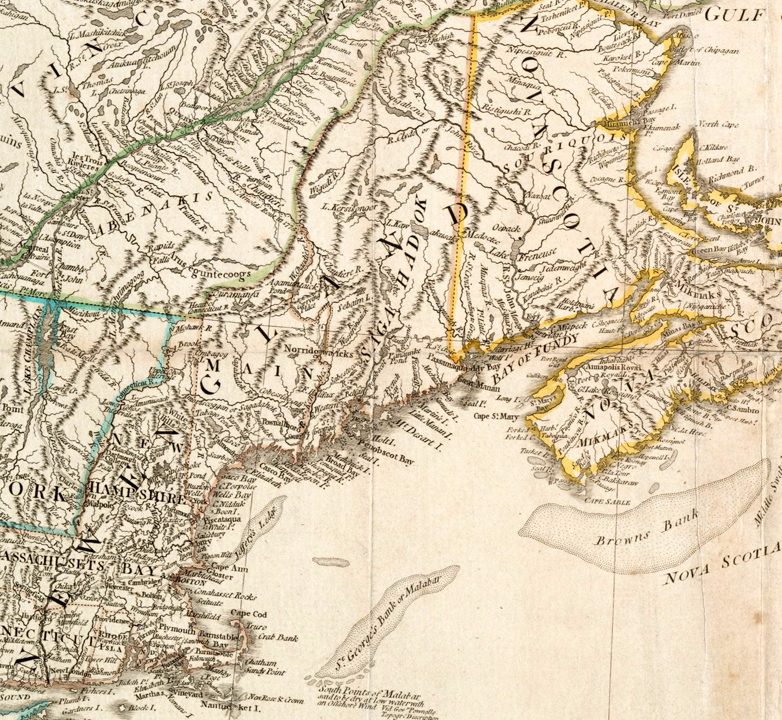The area envisioned for New Ireland was a large swath of territory centered around Penobscot Bay in eastern Maine. Why establish a colony in this location? There were two reasons, the first being military advantages. It would give a station for the King’s cruisers much nearer than Halifax, would cover the Bay of Fundy and Nova Scotia from molestation by sea, would prevent any land attack on what later became New Brunswick, and would even protect Lower Canada; further, it isolated the town of Machias to the east, which was a patriot stronghold and a thorn in the side of the British. Second, it would provide a haven for the stream of loyalist refugees who were leaving the colonies and already driving the home government to distraction. Yet, as convincing as the military and loyalist arguments may be, the true impetus behind the outpost was both personal and political. Nutting and Dr. Calef, with their property holdings, saw an opportunity for personal gain in establishing a British outpost on the Penobscot River. Calef had long sought to gain royal grants for the lands along the Penobscot while Nutting, a successful builder (including barracks for the British troops in the siege of Boston), began to speculate on lands along the Penobscot to build a large lumber enterprise. Both stood to gain immensely, financially, if Britain could establish a foothold in the region and they could legitimize their claims.
In 1775, Calef furthered the mission by forwarding a formal plan for the not-yet-dubbed New Ireland to Francis Bernard, a former Massachusetts governor now living in London. Bernard forwarded the plan to Lord Dartmouth, the current Secretary of State for the Colonies. It is not known for sure, but Dartmouth, upon his resignation, likely forwarded the plan to his successor, George Germain. Germain was the intersection point for the plans, with a second plan later coming from Nutting.

Nutting, two years later, departed for London with his own plan for the new province. Contacting Germain but receiving no reply, he decided to work his way up the ladder, becoming a close confidant with Germain’s undersecretary William Knox. Knox had long supported the idea of establishing a new colony between New England and Nova Scotia and may have served as the link that passed the plan from Dartmouth to Germain. Knox even roughed out some details. It would be called New Ireland. Thomas Hutchinson would be the governor. For the record, Hutchinson pooh-poohed the whole project, calling it in his diary a “most preposterous measure.” And although he let it go because it was “already carrying into execution,” he intended “to make Mr. Knox acquainted, in the most prudent manner I can, with my sentiments.” Calef’s version of the story pegs Thomas Oliver, not Hutchinson, as the proposed governor.